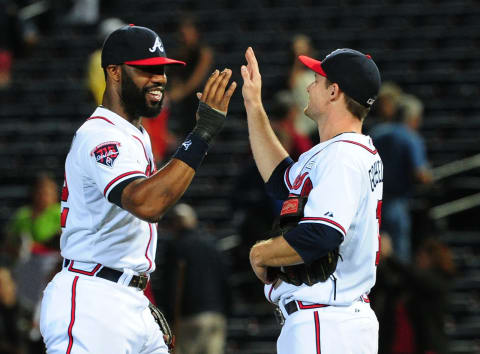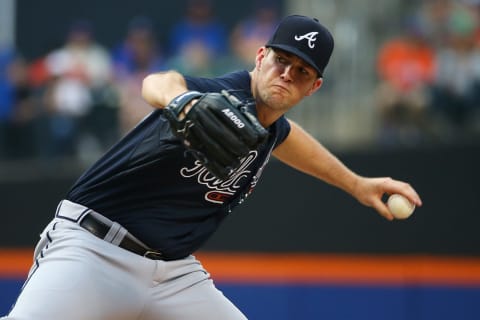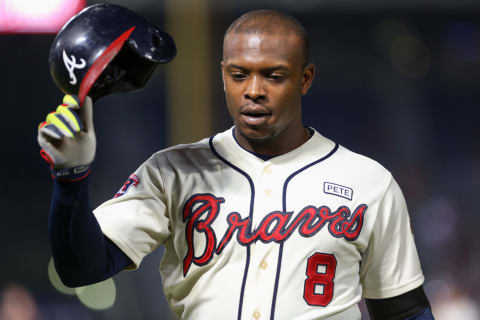Evolution of the Atlanta Braves rebuild part one: 2015


As the Atlanta Braves complete their five year anniversary of the start of the rebuild, it’s kind of amazing how fast they were able to turn things around.
This will be the first part of a five-part trek through the rebuild highlighting key acquisitions made along the way that the Atlanta Braves are still benefiting from here in 2020.
It seems by the timing of everything, the Atlanta Braves and executives made a conscious effort in September of 2014 to overhaul most everything about the Atlanta Braves, including the front office and the roster of the entire team itself.
The first domino to fall was the firing of Frank Wren. The situation unfolded on September 22, 2014, which was a tad odd because obviously the season wasn’t even completed yet.
The Atlanta Braves finished the 2014 season with a 79-83 record and finished second in the NL East standings. Yet again, despite all this, they thought it was time to change.
It is important to keep in mind that money was probably the biggest influence in the decision to tear it down and rebuild from the ground up.
A lot of players were coming towards the end of their contracts and one would assume it was going to be tough for the Atlanta Braves to bring them back.
One cannot fault a team for getting some value back on a player that is not far from leaving for basically nothing.
The other factor when discussing money was the extensions that the aforementioned Frank Wren had handed out the past few years before. Examples include the following:
- Signed Dan Uggla to a 5-year extension after the 2010 season. He was released after the 2014 season but the Atlanta Braves were still on the hook for $19M in 2015.
- Signed BJ Upton after the 2012 season in a deal which was paying him $15M annually
- Giving Chris Johnson a 3 year, $24M extension.
None of those moves worked out and it hampered the franchise financially for a few years. However, Frank Wren also gave us some good deals as well. Examples include:
- Giving Freddie Freeman an extension that we are still reaping the benefits for
- He also gave Andrelton Simmons an extension, which is working out…just not for the Atlanta Braves
- Wren was also the person who signed Ronald Acuna, Ozzie Albies, and Johan Camargo on the international market.
These are probably just a few of the reasons why the Atlanta Braves decided to “start over.” Only a select few know the complete story — most likely. Let’s go ahead and go year-by-year and examine how the roster transformed, starting with 2015.

2015 — The rebuild begins
The 2015 Atlanta Braves roster is most likely the worst roster for the Braves over the last 30 years. Just take a look at some of these names if you want to see for yourself.
It’s easy to see why the Braves finished the 2015 season with a terrible record of 67-95.
- Jace Peterson
- Adonis Garcia
- Juan Uribe
- Pedro Ciriaco
- Alberto Callaspo
- Williams Perez
- Matt Wisler
- An arraying cast of bullpen members.
However, the hot stove that transpired before the 2015 season was probably one of the most important in franchise history.
The first trade that signaled that direction the Atlanta Braves were going was the trade in November of 2014 that sent Jason Heyward and Jordan Walden to the St. Louis Cardinals in exchange for Shelby Miller and Tyrell Jenkins.
Obviously, Miller didn’t move the needle much in his short tenure with the Braves, but as we all know, his name will pop up again soon and this very well may have been the most important deal in the entire rebuild.
Then the Atlanta Braves made a curious signing in early December for a player that some would curiously ask…why are we still employing.
Nick Markakis, of course, is who we are talking about.
Don’t get me wrong, Markakis has actually performed better than I ever thought he would, but he was supposed to be a veteran leader who guided the kids through the rebuild.
He filled that job wonderfully, yet here he still is after the rebuild. Perhaps, the Braves are trying to let him go out as a winner as a thank you?

More trades
Buckle up because the Braves were far from done wheeling and dealing in this particular offseason.
Shortly before Christmas, the Braves pulled off the first of two trades with the new fresh-faced GM in San Diego, AJ Preller.
To spare the details and keep this flowing, it was a deal centered around Justin Upton.
The Braves got multiple pieces back in return, but one piece sticks out more than the others.
Max Fried, who after a few injury-riddled years, is finally turning this trade into a win for the Braves especially considering Upton’s tenure in San Diego was short-lived.
Enter the feel-good story of the Braves 2014 season.
Apparently the Braves knew that Evan Gattis couldn’t last behind the dish and just as everyone suspected, he was a better fit for an American League team.
That team would obviously be the Houston Astros. But again, the Braves found an important part of the future when part of the return was Mike Foltynewicz.
So, 40 percent of the 2020 projected starting rotation was acquired via trades in a few week span in the 2014-2015 Winter. Not a bad trade-off.
Then there was the shocker on Opening Day Eve. Longtime favorite and local product, Craig Kimbrel, was possibly the best closer in the game at the time, but he was unfortunately the one that had to be packaged with the aforementioned BJ/Melvin Upton for a team to take on that salary that was bogging the Atlanta Braves down.
Again, it was the San Diego Padres who were seemingly pushing all their chips in the center of the table for the 2015 season.
The return was considered light at the time as the main focus was to get rid of Upton’s contract.
Still, Matt Wisler was considered a good prospect at the time and was considered to be the bright spot of the return. We all know now in hindsight, he never gave much value to the Atlanta Braves.
The hidden value in this deal was the draft pick the Braves received as well. The Atlanta Braves acquired the 41st pick in the 2015 MLB draft (which we will get more into eventually) and in turn, they selected a young power hitter out of high school in Mississippi, Austin Riley.
Yes, the Braves unloaded the albatross Upton contract and possibly received their third baseman in the future. Yes, it cost us Kimbrel, but sometimes you gotta pay to get nice things.
Next. Speaking of Riley... dark
That does it for the evolution of the rebuild in 2015, which was really a huge year. Next, we’ll take a look at 2016.